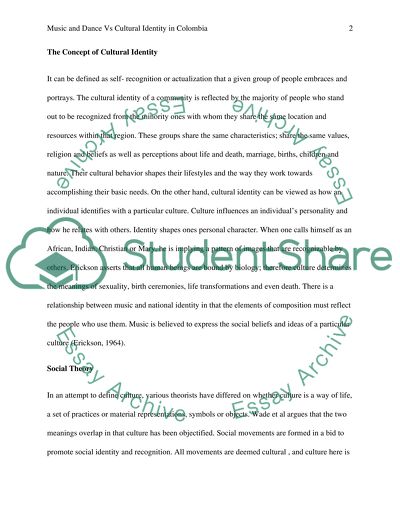Cite this document
(Impact of National Music and Dance on Cultural Identity of Colombia Coursework, n.d.)
Impact of National Music and Dance on Cultural Identity of Colombia Coursework. https://studentshare.org/performing-arts/1596466-how-do-music-and-dance-help-to-define-and-differentiate-cultural-identities-in-contemporary-colombia-in-your-answer-remember-to-consider-the-importance-of-both-popular-and-traditional-music-in-establishing-a-particular-type-of-national-identity
Impact of National Music and Dance on Cultural Identity of Colombia Coursework. https://studentshare.org/performing-arts/1596466-how-do-music-and-dance-help-to-define-and-differentiate-cultural-identities-in-contemporary-colombia-in-your-answer-remember-to-consider-the-importance-of-both-popular-and-traditional-music-in-establishing-a-particular-type-of-national-identity
(Impact of National Music and Dance on Cultural Identity of Colombia Coursework)
Impact of National Music and Dance on Cultural Identity of Colombia Coursework. https://studentshare.org/performing-arts/1596466-how-do-music-and-dance-help-to-define-and-differentiate-cultural-identities-in-contemporary-colombia-in-your-answer-remember-to-consider-the-importance-of-both-popular-and-traditional-music-in-establishing-a-particular-type-of-national-identity.
Impact of National Music and Dance on Cultural Identity of Colombia Coursework. https://studentshare.org/performing-arts/1596466-how-do-music-and-dance-help-to-define-and-differentiate-cultural-identities-in-contemporary-colombia-in-your-answer-remember-to-consider-the-importance-of-both-popular-and-traditional-music-in-establishing-a-particular-type-of-national-identity.
“Impact of National Music and Dance on Cultural Identity of Colombia Coursework”. https://studentshare.org/performing-arts/1596466-how-do-music-and-dance-help-to-define-and-differentiate-cultural-identities-in-contemporary-colombia-in-your-answer-remember-to-consider-the-importance-of-both-popular-and-traditional-music-in-establishing-a-particular-type-of-national-identity.


